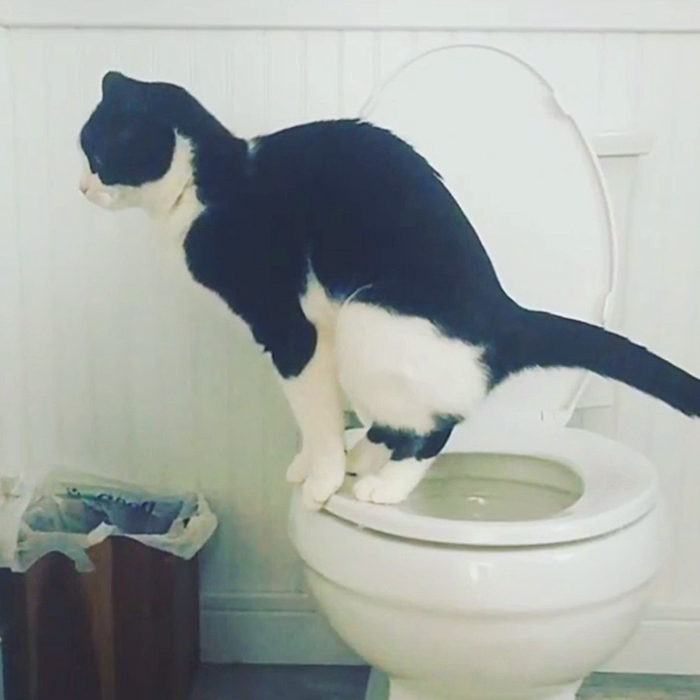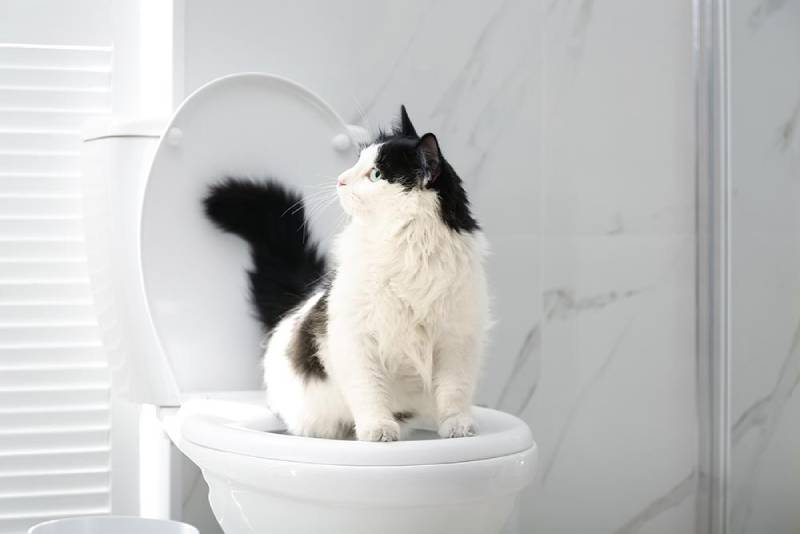The Dangers of Flushing Cat Poop Down Your Toilet - Tips for Safer Handling
The Dangers of Flushing Cat Poop Down Your Toilet - Tips for Safer Handling
Blog Article
They are making a few good points on Don’t flush cat feces down the toilet as a whole in this great article underneath.

Introduction
As cat proprietors, it's vital to bear in mind how we deal with our feline friends' waste. While it might seem practical to purge pet cat poop down the bathroom, this method can have damaging consequences for both the atmosphere and human health.
Ecological Impact
Purging pet cat poop introduces unsafe pathogens and bloodsuckers into the water, posturing a considerable danger to marine communities. These impurities can negatively impact marine life and compromise water high quality.
Health and wellness Risks
In addition to ecological concerns, flushing pet cat waste can also present wellness threats to human beings. Cat feces may contain Toxoplasma gondii, a parasite that can cause toxoplasmosis-- a possibly severe disease, especially for pregnant women and people with weakened immune systems.
Alternatives to Flushing
Thankfully, there are more secure and more liable means to deal with cat poop. Consider the following choices:
1. Scoop and Dispose in Trash
One of the most common method of dealing with pet cat poop is to scoop it right into an eco-friendly bag and toss it in the garbage. Be sure to use a committed trash scoop and throw away the waste quickly.
2. Usage Biodegradable Litter
Opt for naturally degradable pet cat litter made from products such as corn or wheat. These litters are environmentally friendly and can be securely thrown away in the garbage.
3. Hide in the Yard
If you have a backyard, consider hiding pet cat waste in a marked location away from veggie gardens and water sources. Make certain to dig deep sufficient to avoid contamination of groundwater.
4. Mount a Pet Waste Disposal System
Buy a family pet waste disposal system particularly created for feline waste. These systems utilize enzymes to break down the waste, lowering smell and ecological effect.
Final thought
Responsible pet ownership expands past supplying food and shelter-- it additionally entails appropriate waste management. By refraining from purging feline poop down the toilet and going with alternate disposal techniques, we can minimize our ecological footprint and shield human health and wellness.
Why Can’t I Flush Cat Poop?
It Spreads a Parasite
Cats are frequently infected with a parasite called toxoplasma gondii. The parasite causes an infection called toxoplasmosis. It is usually harmless to cats. The parasite only uses cat poop as a host for its eggs. Otherwise, the cat’s immune system usually keeps the infection at low enough levels to maintain its own health. But it does not stop the develop of eggs. These eggs are tiny and surprisingly tough. They may survive for a year before they begin to grow. But that’s the problem.
Our wastewater system is not designed to deal with toxoplasmosis eggs. Instead, most eggs will flush from your toilet into sewers and wastewater management plants. After the sewage is treated for many other harmful things in it, it is typically released into local rivers, lakes, or oceans. Here, the toxoplasmosis eggs can find new hosts, including starfish, crabs, otters, and many other wildlife. For many, this is a significant risk to their health. Toxoplasmosis can also end up infecting water sources that are important for agriculture, which means our deer, pigs, and sheep can get infected too.
Is There Risk to Humans?
There can be a risk to human life from flushing cat poop down the toilet. If you do so, the parasites from your cat’s poop can end up in shellfish, game animals, or livestock. If this meat is then served raw or undercooked, the people who eat it can get sick.
In fact, according to the CDC, 40 million people in the United States are infected with toxoplasma gondii. They get it from exposure to infected seafood, or from some kind of cat poop contamination, like drinking from a stream that is contaminated or touching anything that has come into contact with cat poop. That includes just cleaning a cat litter box.
Most people who get infected with these parasites will not develop any symptoms. However, for pregnant women or for those with compromised immune systems, the parasite can cause severe health problems.
How to Handle Cat Poop
The best way to handle cat poop is actually to clean the box more often. The eggs that the parasite sheds will not become active until one to five days after the cat poops. That means that if you clean daily, you’re much less likely to come into direct contact with infectious eggs.
That said, always dispose of cat poop in the garbage and not down the toilet. Wash your hands before and after you clean the litter box, and bring the bag of poop right outside to your garbage bins.
https://trenchlesssolutionsusa.com/why-cant-i-flush-cat-poop/

I recently found that blog post about How to Dispose of Cat Poop and Litter Without Plastic Bags while scouting around the internet. Feel free to take the opportunity to share this blog if you enjoyed reading it. Many thanks for your time. Don't forget to pay a visit to our site back soon.
Show Details Report this page